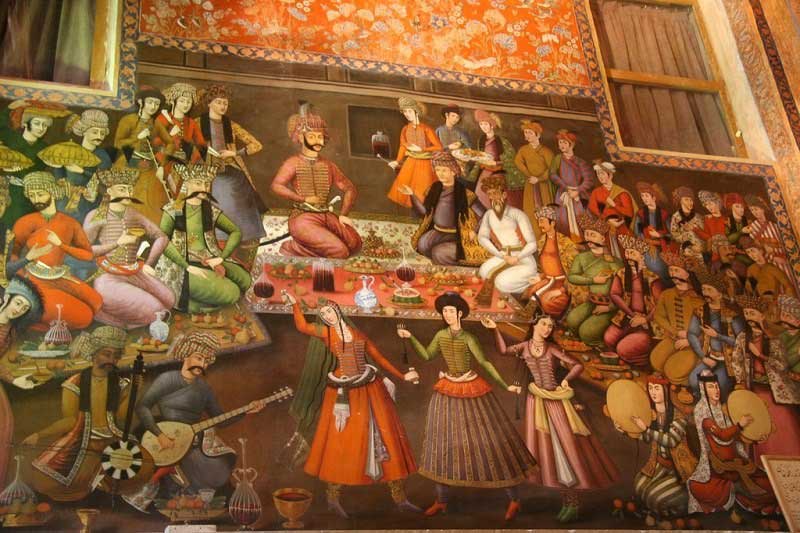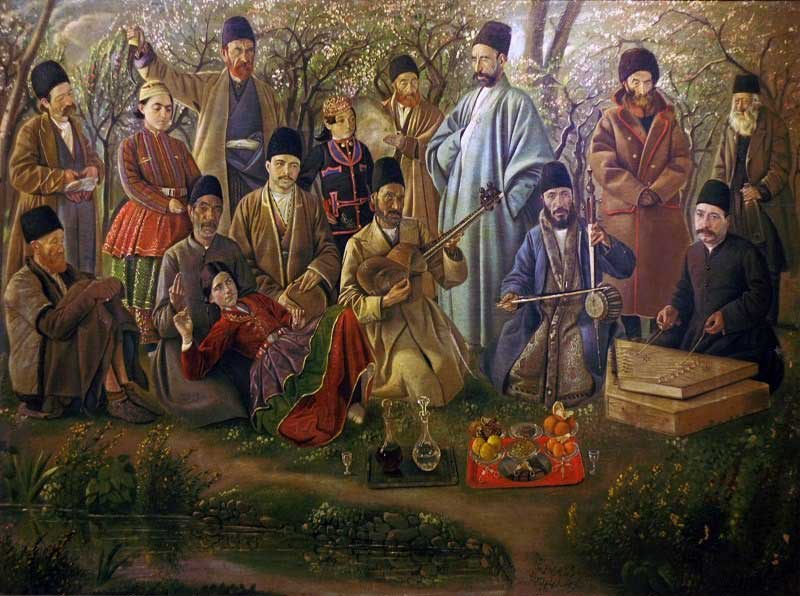Are Arabic and Iranian music the same?
The Middle East is a cradle of diverse traditions and cultures. Among its most notable cultural expressions are the musical traditions of Iran and the Arabic-speaking world. On many different levels, these traditions are similar, mostly due to their historical interactions and shared cultural spaces. However, they are distinct in many ways, too. These two musical traditions differ in structure, instrumentation, theory, and cultural context. To uncover the delicate similarities and differences between Arabic and Iranian musical cultures, we will explore these two distinct traditions in this article.
Arabic and Iranian music: Musical scales, modes and rhythmic structures
One of the main areas of divergence between Iranian and Arabic music is in their theoretical foundations. Iranian music, known as Persian classical music, is built on a series of scales and modal sequences, known as the Dastgah system, that serves as the foundation of improvisation and composition in Persian music. Each of the Dastgah systems consists of a collection of melodic pieces, known as the Gushehs, that musicians often use as building blocks of their musical pieces. The rhythmic cycles of Iranian music, known as the Usuls, have specific patterns and usage. Persian music mainly emphasizes a more flexible and fluid approach to rhythm, as some experts describe, resulting in a more spontaneous interplay between musicians.
In contrast, Arabic music is primarily based on a modal structure known as the Maqam system that governs different pieces’ patterns, pitches, and developments. This system is characterized by using quarter tones. The latter divides the octave into 24 pitches. While both the Dastgah and Maqam systems use microtones, the emotional expressions and the specific intervals associated with each mode differ significantly. On the other hand, Arabic music employs various rhythmic cycles, ranging from simple to highly complex patterns. These are known as the Iqaat. These cycles build the structural foundation within which musicians mainly work. Also, Iqaat is essential to Arabic music as it is the main base of improvisation and expression.
Although the rhythmic structure is distinctly different between Iranian and Arabic music, they exhibit some levels of similarities as well:
- Flexibility in improvisation: Both the Usulas and Iqaat serve as frameworks that allow for high degrees of improvisation flexibility. In the Iqaat system, the Maqsum, with its balanced structure and D T—TD—T—pattern, provides the highest versatility and is widely used across various Arabic music genres. In Iranian music, Dastgah-e Shur, with its D—T—D—T— pattern, is the main choice of musicians when it comes to melodic and rhythmic improvisations.
- Microtiming: Both the Iranian and Arabic music traditions employ microtiming, which involves subtle variations in timing. This method adds more expressiveness to the rhythm.
Arabic and Iranian music: Instruments and Timbres
Instrumentation also marks a notable distinction between Arabic and Iranian music. Iranian music prominently features string-based instruments such as tar, kamancheh, santur, and setar, as well as percussion instruments such as tombak. The soundscape created by these instruments is unique and reflects Persian classical music’s specific aesthetic values and playing techniques. Not to mention that many of these musical instruments originated in Iran. These instruments are designed to emphasize expressive and nuanced timbers. Instruments such as tar and setar are known for producing nuanced tones, essential for melodic ornamentation in Persian musical culture.
On the other hand, Arabic music commonly features instruments like the oud, ney, and Qanun, which are known for their distinctive timbres and roles within an ensemble. Any musical instrument employed in Arabic musical culture emphasizes warm and rich timbres. Oud and Qanun, in particular, produce warm, resonant tones, which are essential for creating a rich harmonic foundation. Also, the use of quarter tones in instruments such as ney and oud contributes to Arabic music’s unique, expressive microtonal nuances.
Arabic music has been a melting pot of various influences, including Turkish, African, Andalusian, and Persian
Nevertheless, some instruments are found in both traditions, sometimes with different names and with some slight differences in their forms:
- Daf: A daf is a large, framed drum used in both Arabic and Persian musical traditions. In Iranian music, it is particularly associated with Sufi rituals, while in Arabic musical culture, it is more used in a variety of folk and classical settings.
- Ney: Ney is an end-blown flute used in both musical cultures to produce breathy timbres.
Arabic and Iranian music: Cultural, historical and social context
If we move the clock backward, a simple world map would immediately show that the regions encompassing modern-day Iran and the Arabic-speaking countries were once interconnected through trade, cultural, and conquest exchanges. The Islamic Caliphates, Persian empires, and other dynasties facilitated the flow of artistic ideas, particularly music. Iranian music is deeply rooted in Persian culture and is mostly affected by its ancient history, poetry, and philosophical traditions. On the contrary, Arabic music reflects a diverse array of cultural influences, often incorporating elements from folk traditions and religious practices.
Finally, we must emphasize that both Arabic and Iranian music are rooted in ancient civilizations. For instance, Iranian music traces its origins in the Achaemenid Empire, and Arabic music has still maintained its connections to pre-Islamic Arabian culture. The main difference here is that Iranian music is often developed in a relatively insular environment, whereas Arabic music has been a melting pot of various influences, including Turkish, African, Andalusian, and Persian.
Conclusion
In this article, we reviewed the main similarities and differences between Arabic and Iranian music. As we discussed, the main differences between these two ancient and widely known musical cultures are rooted in their rhythmic structures, musical scales, and modes. Each element of musical traditions in these two regions is undoubtedly affected by the cultural and historical tales of the countries. In contemporary times, however, both the Iranian and Arabic musical cultures continue to evolve under the influence of globalization and technological advancements. Despite several modern intersections that are now available, the musical cultures’ core characteristics have remained distinct, and preserve their unique identities.



